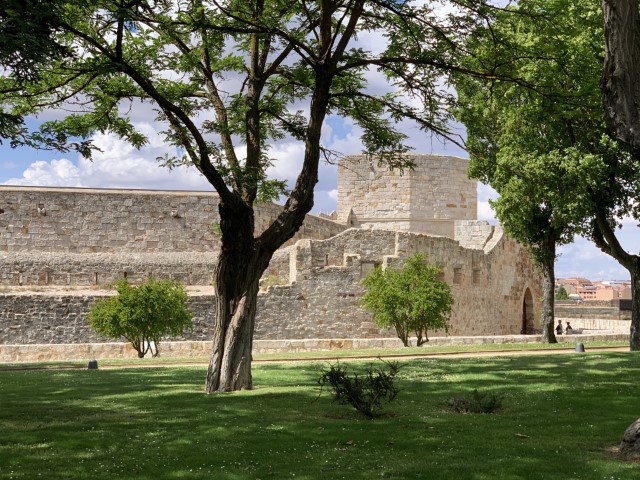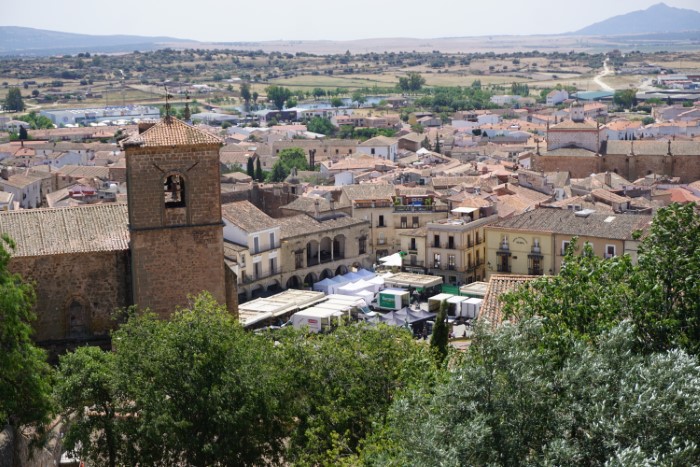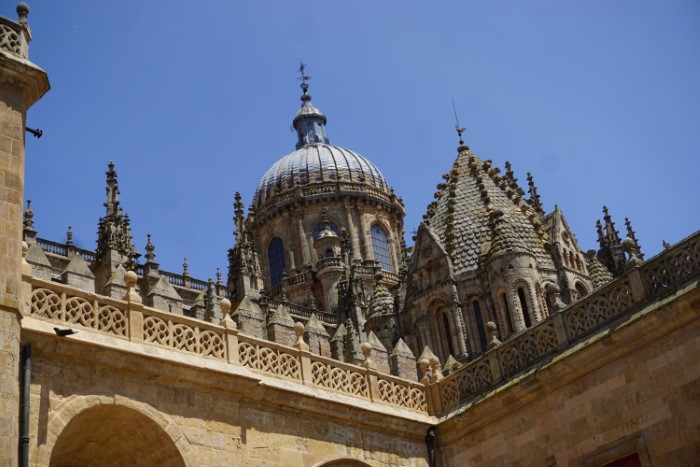For the final few days of our trip we decided to stay at a campsite at Comillas about 30 kilometres west of Santander on Spain’s northern coast.. On arrival we found that the site we’d chosen wouldn’t open for another few days, so we spent the night wild-camping on the sea front in Comillas. Lovely beach and the port still has plenty of old-world charm despite having a large number of what we presumed to be holiday apartments. In the height of the holiday season I imagine the place must get packed. Denise nearly got the swim she’d been pining for but the tide and undertow was a little too strong. We ended up spending three nights on a very nice campsite about five kilometers away which fortunately had a pool.
 The 120 kilometre drive from Comillas to Bilbao is fairly uninteresting, though we noticed, not for the first time, that the woods and hillsides are heavily dominated by eucalyptus trees which were originally planted for the local pulping industry but have spread and obviously thrive in the warm and damp climate of the northern coast. The fact that they are now out of control is increasingly being recognised by the Spanish authorities for the threat they pose to native species and the increased fire risk. An obvious and worrying example of the law of unintended consequencess.
The 120 kilometre drive from Comillas to Bilbao is fairly uninteresting, though we noticed, not for the first time, that the woods and hillsides are heavily dominated by eucalyptus trees which were originally planted for the local pulping industry but have spread and obviously thrive in the warm and damp climate of the northern coast. The fact that they are now out of control is increasingly being recognised by the Spanish authorities for the threat they pose to native species and the increased fire risk. An obvious and worrying example of the law of unintended consequencess.
We stayed our last night in a camperstop high on a hill above Bilbao with superb views of the city. We started our 2019 trip to Portugal there but this time it was virtually full and we were fortunate to get a slot. In the afternoon we took the local bus down into the old part of the city to have a wander and enjoy an icecream while sitting on the embankment and watching the world go by. The ferry port is only about 20 kilometres from the camperstop but we left in plenty of time and were among the first in the queue for the ferry. – which inevitably meant that we were among the last to board! The one consolation was that I had a nice conversation with the owner of this beautiful Aston Martin DB3S. It looked to me to be in fabulous condition but he was taking it back to UK for a complete, year-long, rebuild – I suppose you can afford to do that when your car is worth £5-6 million………
The ferry port is only about 20 kilometres from the camperstop but we left in plenty of time and were among the first in the queue for the ferry. – which inevitably meant that we were among the last to board! The one consolation was that I had a nice conversation with the owner of this beautiful Aston Martin DB3S. It looked to me to be in fabulous condition but he was taking it back to UK for a complete, year-long, rebuild – I suppose you can afford to do that when your car is worth £5-6 million………



























